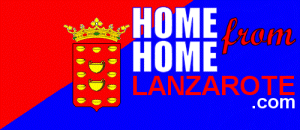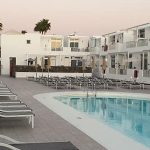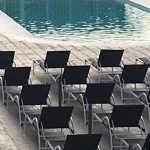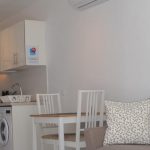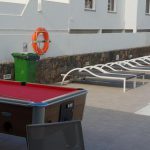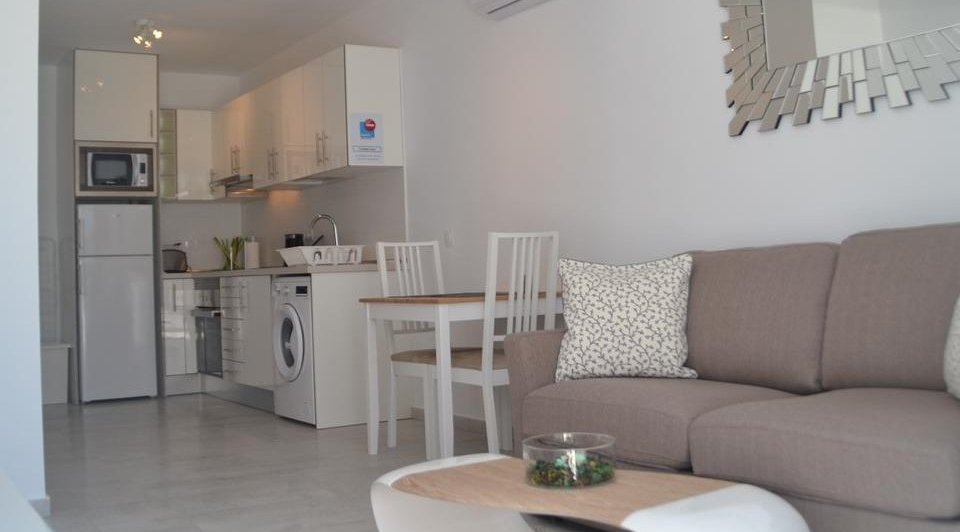PLACES OF INTEREST
Puerto del Carmen is a resort town on the southeast coast of the Spanish island of Lanzarote. It’s home to beaches such as sandy Playa Grande and Matagorda, which is known for its steady breeze. Fishing boats cluster at the old town dock, El Varadero. Avenida de las Playas, a beachside boulevard, is lined with shops, restaurants and lively nightclubs. Just inland, Rancho Texas Lanzarote Park has a zoo.
Timanfaya National Park – Fifty-one square kilometres of volcano and lava fields have been turned into a National Park and the island’s most popular tourist attraction. If you’ve never experienced a coach load of people hushed into silence by the awe-inspiring beauty of their surroundings, this is for you. Park rangers will also demonstrate the heat of the volcanoes, and there is a restaurant where meat is grilled by the heat of the earth’s molten core.
Cesar Manrique Foundation – Situated near the Tahiche roundabout where Manrique lost his life, this was his home for many years and is an amazingly creative building that uses volcanic lava flows and bubbles to blend art and nature perfectly.
The Cactus Gardens – These beautiful gardens were created by the artist/architect Cesar Manrique and are home to 1420 different species of cactus. A fascinating, yet wonderfully tranquil place, you can take in stunning panoramic views of the surrounding area from a traditional working windmill. The prickly pear cactus, prolific in this area, is home to the cochineal beetle, the red dye extracted from which was once the greatest export from Lanzarote. Open from 10.00 to 18.00 daily.
La Geria – Lanzarote’s wine growing region. A drive through the picturesque wine fields offers a unique journey of discovery into the interior of an island. The scene is that of hundreds upon thousands of little circular hollows in the ground, each with a single green vine at its centre and a semi-circular small wall of volcanic rock skirting its edge. The vibrant green vines offset by the black picon provide an amazing landscape covering the entire area. The Malvasia grape is most commonly grown here and one can sample and buy the wine on a visit to one of the many Bodegas in the area.
Jameos del Agua – A prehistoric eruption created natural caves with roofless bubbles of lava (Jameos). A beautiful lake is connected to the sea from underground, and is home to a rare species of blind albino crab. Cesar Manrique created a setting of artistically arranged flora with a complex of restaurant, bar cafeteria, and an amazing concert cave with wonderful acoustics.
Mirador del Rio – Yes another of Manrique’s creations. This lookout point is located at the north end of the island on top of a cliff, 479 metres above sea level. The views of the island of La Graciosa and over the islet Montana Clara, as well as Las Salinas del Rfo, the oldest salt plains of the archipelago, are simply breath-taking.
Monumento al Campesino – In the geographical centre of the island stands a 15 metre high modern sculpture of the Campesino (farm worker), with his cat, dog and rat. Nearby is the ‘Casa de Campesino’, a converted farm with an agricultural museum, shops and restaurant.
El Golfo – The view of the green lake and black sand of El Golfo is one of the most stunning on the island, another must on any tourist’s itinerary. The village of El Golfo itself features restaurants famous for their fresh fish.
Museums
Aeronautical Museum – Set in the tiny building that was Lanzarote’s first terminal, the airport museum is an interesting glimpse at the history of aviation on the island.
Museo del Emigrante – Lanzarote has a long and sad history of emigration as islanders were driven far away by famine or the promise of a better life. This museum, in the Castillo of St Barbara overlooking Teguise, is a moving and fascinating glimpse of the past.
El Grifo Wine Museum – See how wine has shaped Lanzarote’s history at the island’s oldest bodega, El Grifo, just outside San Bartolome. From the sweet, fortified wines that made the island rich in Shakespeare’s day to the young dry whites the island is famed for now, it’s all here.
El Patio Agricultural Museum – A great little museum in Tiagua, that displays the island’s farming heritage, from goats and camels to wine, tomatoes and onions, as well as more exotic produce such as cactus fruit.
Museo Tanit – This little museum in San Bartolome shows various aspects of the cultural and archaeological history of the islanders, with costumes and artefacts that show how life was lived n centuries past.
Palacio Spinola – An elegant colonial-style house set in the ancient capital of Teguise, the Palacio Spinola provides a glimpse into the lifestyles of the colonial rich.
Whale Museum – Dedicated to Lanzarote’s largest visitors, the Whale and Dolphins Museum in Puerto Calero is a fund and educational visit for adults and children alike.
Theme Parks
Rancho Texas – Crocodiles, eagles, tigers, pumas and many other creatures can be seen at this Wild West themed park, where kids can enjoy various shows, ride in canoes and prospect for gold. Small water park. Tuesday and Friday is also Wild West Night where you can experience a Cowboy worthy BBQ, unlimited drinks and a great evening of entertainment.
Water Park – Endless slides, flumes and pools at Costa Teguie’s Water Park, where you can spend a day getting wet and wild.
Beaches
With 89 beaches cover 54 kilometres, Lanzarote is a Mecca for beach lovers. From May to October, bathing is perfect on the southern side of the island and the natural sand swept over from the Sahara over centuries or produced by the volcanoes makes the island’s beach varied but always beautiful.
Playa Grande – Puerto del Carmen’s success is built on its perfect expanse of golden sand that extends for 7 kilometres. Every leisure activity is catered to.
Playa Chica – This small beach near Puerto del Carmen’s Old Town is frequently crowded, but it is still a little treasure in the heart of the islands main tourist hotspot. Bathing is perfectly safe, and you’ll be surprised at the sea life you can see if you go snorkelling.
Playa Dorada – Playa Blanca’s largest beach provides sun beds, parasols, sheltered bathing, a wide range of activities and magnificent views over to Fuerteventura. Beach bar/restaurant serving food and drink throughout the day and toilet facilities.
Papagayo – Accessible only by boat or over a rough track, Papagayo is worth the effort as many regard it as the best in the Canaries.
Famara – A magnet for surfers and kits surfers, Famara is located beneath spectacular cliffs and has a wild rugged beauty that is unique.
Playa Jablillo – Smaller than Costa Teguie’s main beach, Cucharras, Jablillo is perhaps the island’s most perfect family beach, with rock pools, clean sand, safe bathing and spectacular snorkelling opportunities.
